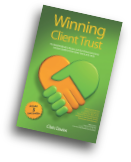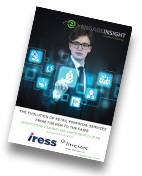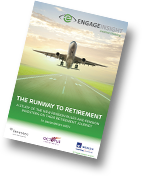Nothing’s forever, after 92 years we see an old friend disappear from our high street for good. A sign of the times maybe, but what were the key contributors and the lessons retail advisers can learn from the latest world recession’s casualty?
Well, the writing was on the wall for sometime. It is clear that the HMV model had not kept pace and changed with the digital age. In 2004/5 iTunes transformed the way we purchase our music. Last Christmas’s retail sales statistics illustrate that there is now more purchased online than offline.
HMV did not move quickly enough to deliver streamlined online services. This was crucial to their survival, particularly when you consider their target market; Younger music and video hungry consumers who are well and truly Internet savvy.
This, combined with the fact that entering a HMV store was like a trip back to the 80s, meant the HMV in-store customer experience was stale.
There are plenty of other examples of businesses that have either not seen or embraced change that have failed. The most notable to my mind was Kodak. Started by George Eastman with the slogan “You push the button, we do the rest”, at its peak Kodak dominated 90% of the film market and 85% of camera sales. Yet last year it filed for bankruptcy.
Actually, Kodak could be seen as the first social media company, connecting people through photography. But it is clear that a culture of complacency was endemic. Despite realising that film cameras were becoming obsolete, the board were happy letting the money continue to roll in based on a broken business strategy. Why change when you’re making money? ($16bn in revenues in 2000). Kodak’s management did not want to spend time and money moving their strategy into the digital age, let alone develop their own smart technology to feed the demand for instant data and products.
Here is the lesson for RDR: Leadership. Market participants are now in a similar scenario, facing uncharted territory. Despite businesses stipulating they are ‘RDR ready’ (some say they have been for years), we are now actually in a new economy and from the RDR survey we conducted at the end of last year, only a few are adopting relationship capital with all stakeholders in the market.
This new relationship economy means that market participants have to be flexible and nimble where their client’s needs are concerned. They need to be fluid in service. Making it easy for clients to purchase products and services is key along with enhancing the client experience to ensure value.
Clients are more discerning than ever. They are savvy enough to check the Internet and do their own due diligence before visiting a financial adviser or going direct to buy a product. They are fickle enough to orphan themselves if they do not see value in fee-based advice or the product charges.
So financial adviser firms now have to ensure they have the right people in the right place with the right skill sets. This includes having a fully functional board that not only meets the corporate governance and management information (MI) regulatory criteria, but one that ensures key strategies such as stakeholder communication, client service propositions, operations and system support all are aligned to regulatory directives and client and stakeholder needs.
This requires effective and efficient leadership. Indeed next generation leaders without the traditional transactional ‘sales’ focus are emerging. This is most evident in the compliance culture we now have in the City.
Leaders now have to balance risk management, professional ethics and values and fiduciary relationships, with a transparent and efficient business model.
A leader now needs to be a visionary, coach, mentor, pacesetter and communicator and commander. He or she needs to think lean and ensure the business remains profitable whilst exhibiting enough value in services so that their clients will remain loyal.
Our survey highlighted some worrying issues around adviser firm overconfidence in the client-centricity of business operations and adviser charge facilitation as the answer to fee charging. Conversely there was a lack of confidence in the profitability of the advice business model, product provider adviser charge validation, MI tracking firm/adviser progress and little uniformity on advice processes and front/middle and back offices.
Yet there were good indications that business models had been changed and were adaptable to further challenges. This means, with the right leadership in place, these firms can be flexible enough to adapt and build in a professional culture where a true consultative process is adopted where a client will be very happy to pay fees directly.
Firms must now embrace the new relationship economy, build boards that are functional, vigilant, diverse and active, and find and nurture leadership talent that will build relationship capital inside and out to ensure all stakeholders (including the regulator) are aligned and a professional culture permeates.
Without this the salutary lessons of HMV and Kodak will not be headed and we run a real risk for distribution turbulence where broken business models will prevail.













